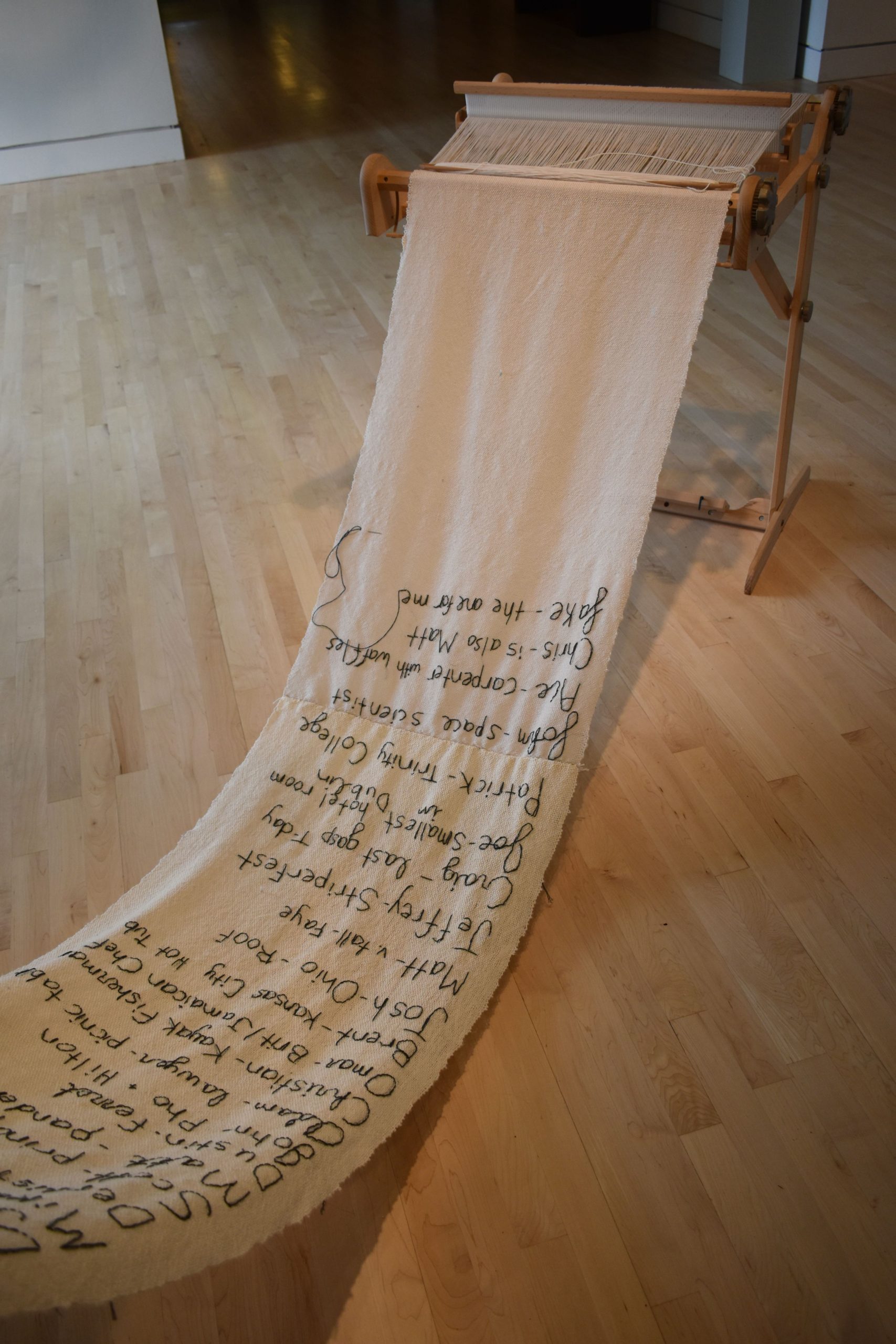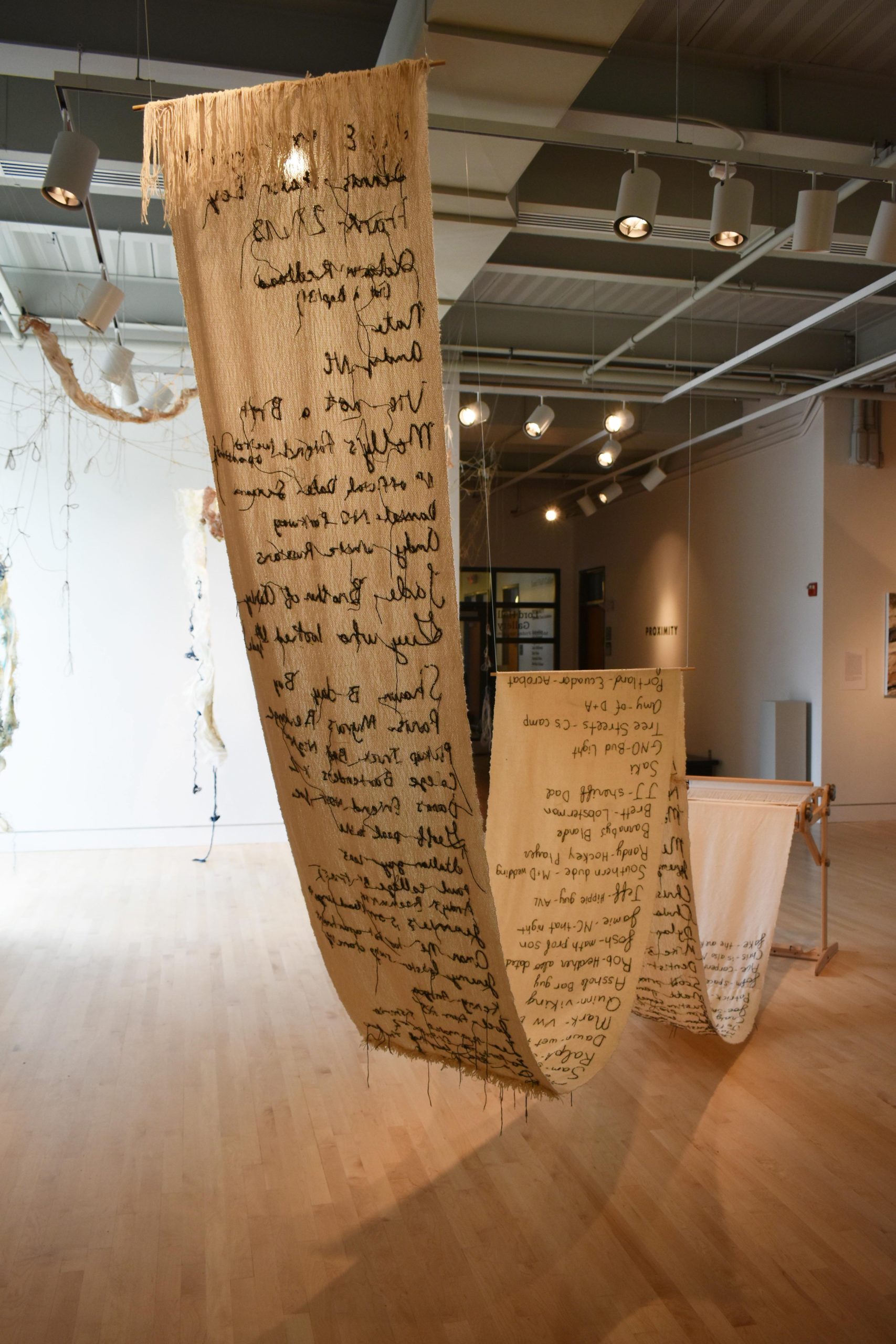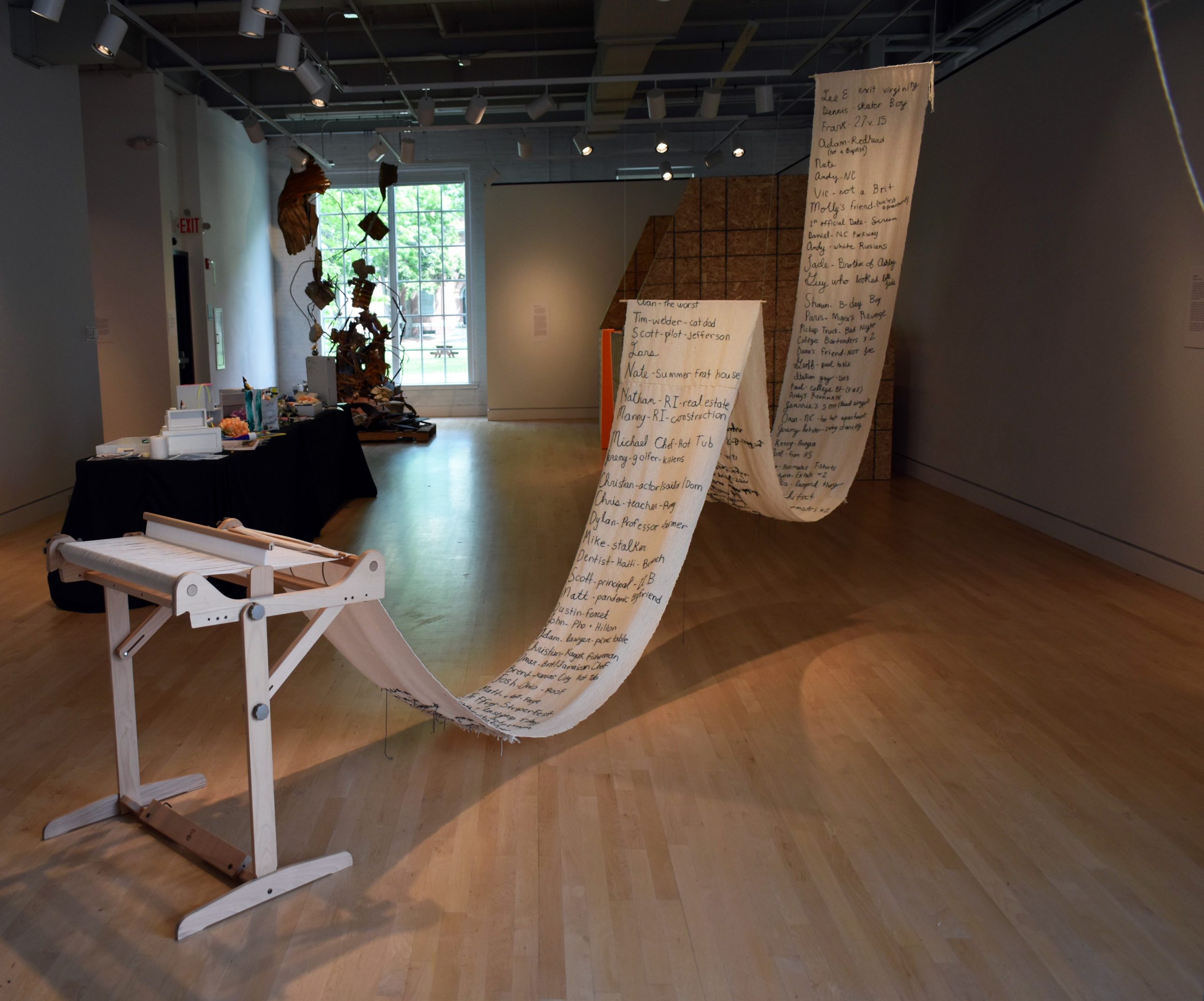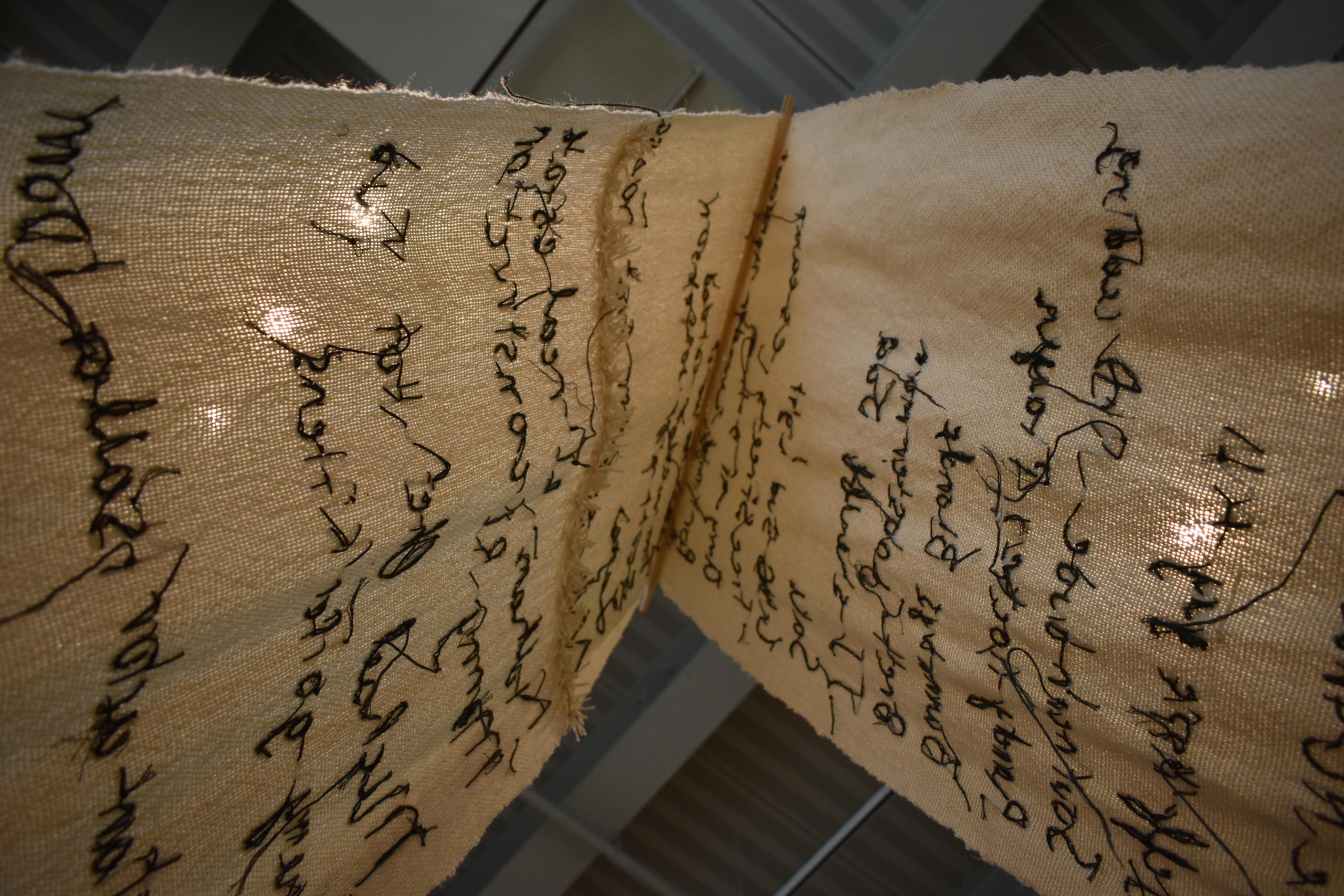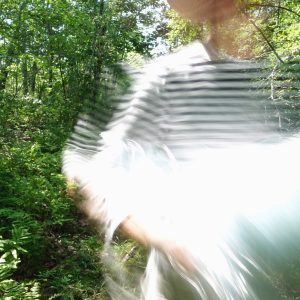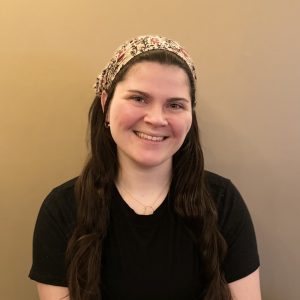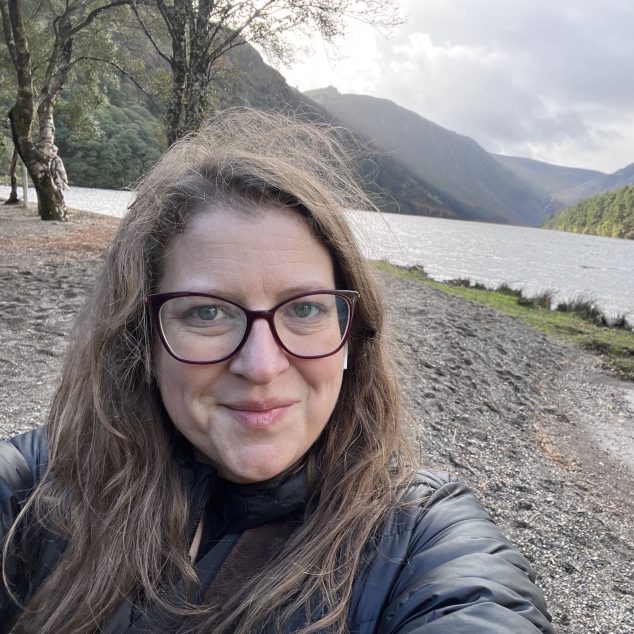
Bio
Jessy Brainerd is a long-time Maine resident and artist whose work intertwines history, feminism, and textile artistry. Drawing from her experiences and the stories of the women who came before her, she uses traditional mediums, such as weaving and needlework, to explore the intersections of art and womanhood.
Much of her artistic research focuses on the role of women now and in the past. This perspective has led to investigations into the expectations for, and reception of, the creative work of women.
A desire to know the how and why of things has compelled Jessy to research the 30,000 year history of the process of weaving, and to purchase or build a progressively more complex series of looms. Through interactive workshops and collaborative projects, she encourages children to expand their creative practices and learn new skills.
Jessy received her Bachelor of Arts in History from the University of Maine at Machias and is currently a candidate for her Master of Fine Arts from the University of Maine. She resides in a house on a small island in Old Town, Maine with her many rescue cats.
Artist Statement
Jessy Brainerd is an artist whose work often employs mediums historically associated with women and the domestic sphere, such as weaving, needlework, culinary arts, crochet, and more, to tell stories, sometimes those of others, and sometimes autobiographical in nature. These pieces often use private artifacts, like a diary or a secret note, as source material for text, which is stitched onto collected or created fabrics in the original authors’ handwriting. Intersections such as public/private, art/craft, past/present, or yours/mine, are explored through a contemporary feminist lens.
Jessy invites viewers to interact with her pieces. Some installations and presentations are accompanied by baked goods that are in some way related to the narrative of the work. Most of her process involves slow and private construction, allowing her to approach the work in a contemplative, sometimes even meditative way. Comfort and care are consistent themes throughout much of her portfolio.
Thesis Work
Previous Works
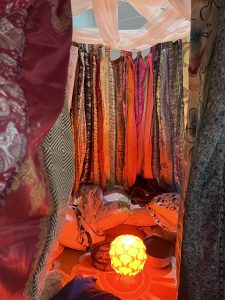
A Very Nice Place (2023) Installation
Ideas of comfort and belonging brought about the construction of A Very Nice Place. The goal was to create a space for people to feel completely comfortable – a “safe space” without the loaded language. Fifteen multi-colored curtains became one large tent surrounding pillows and blankets; gentle warm light, the sound of crickets, and homemade cookies contributed to the experience.
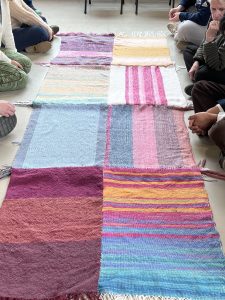
Space (2023)
Eight separate woven pieces have been sewn together, and when exhibited, everyone present was invited to choose a space to sit down. Conversation was facilitated about why they chose the space they were in, what it means to have a space of your own, the presence of “women’s work” in an art space, and more.

You Didn’t Hear This From Me (2022)
Individuals were asked to donate their secrets or lies by anonymously writing them on index cards. The contributions were carefully stitched onto a semi-sheer curtain in the writing of the original author. Layers of curtains and strategic lighting prevent viewers from reading clearly unless they interact with the piece, merging public and private.
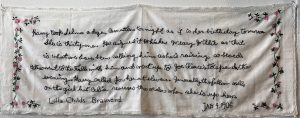
Celia (2022)
An entry from my great-grandmother’s 1906 diary is embroidered on a period linen table runner. 118 years later, the stitched words tell the story of Celia, a woman who bucked society’s expectations, and was in charge of her own relationships.

